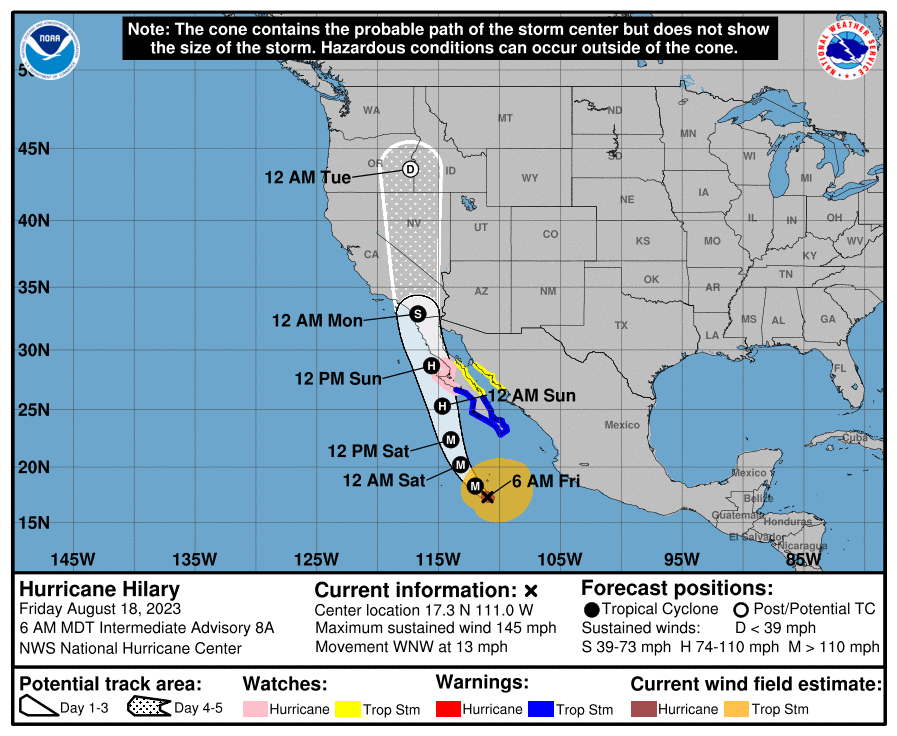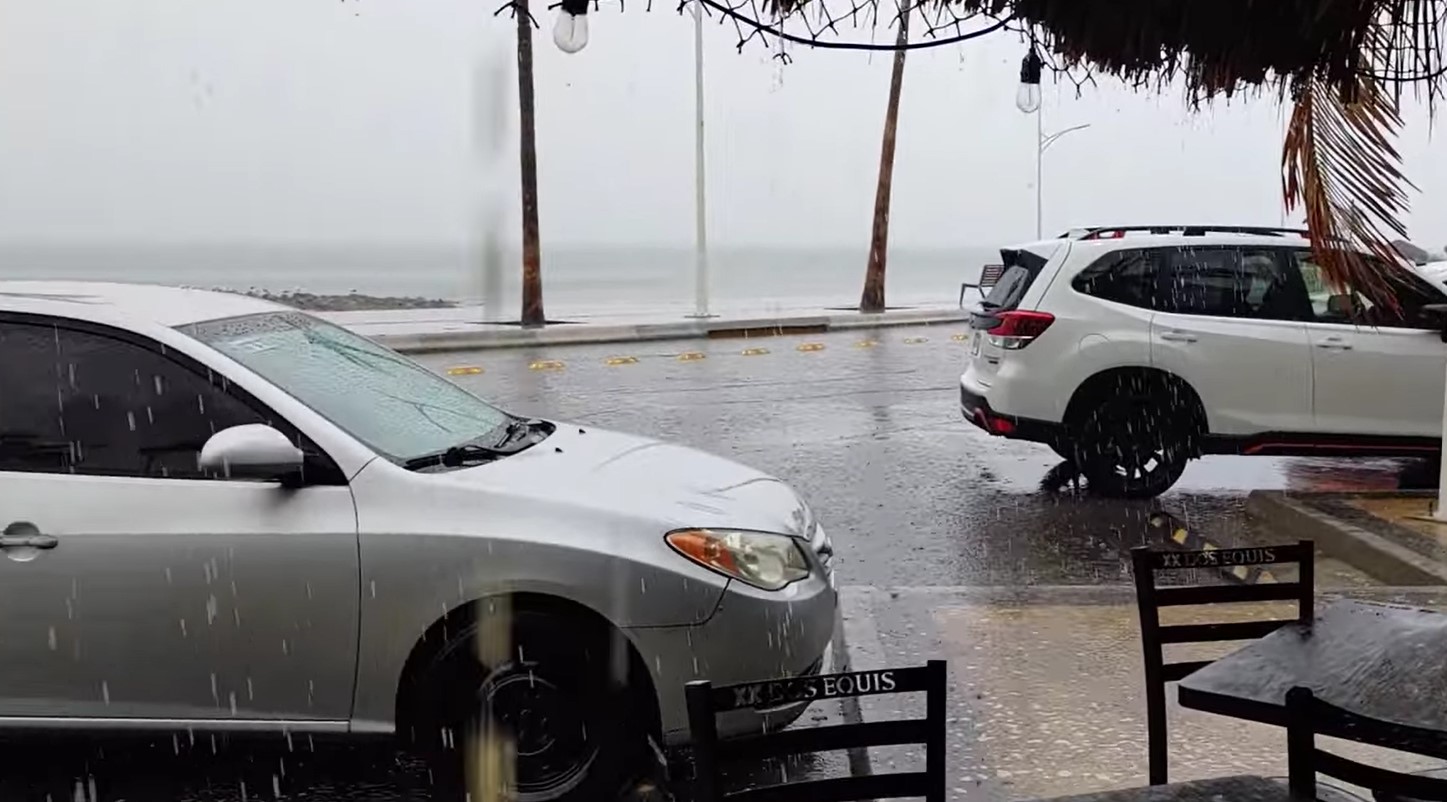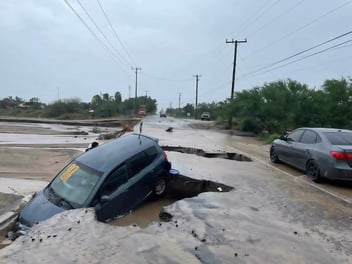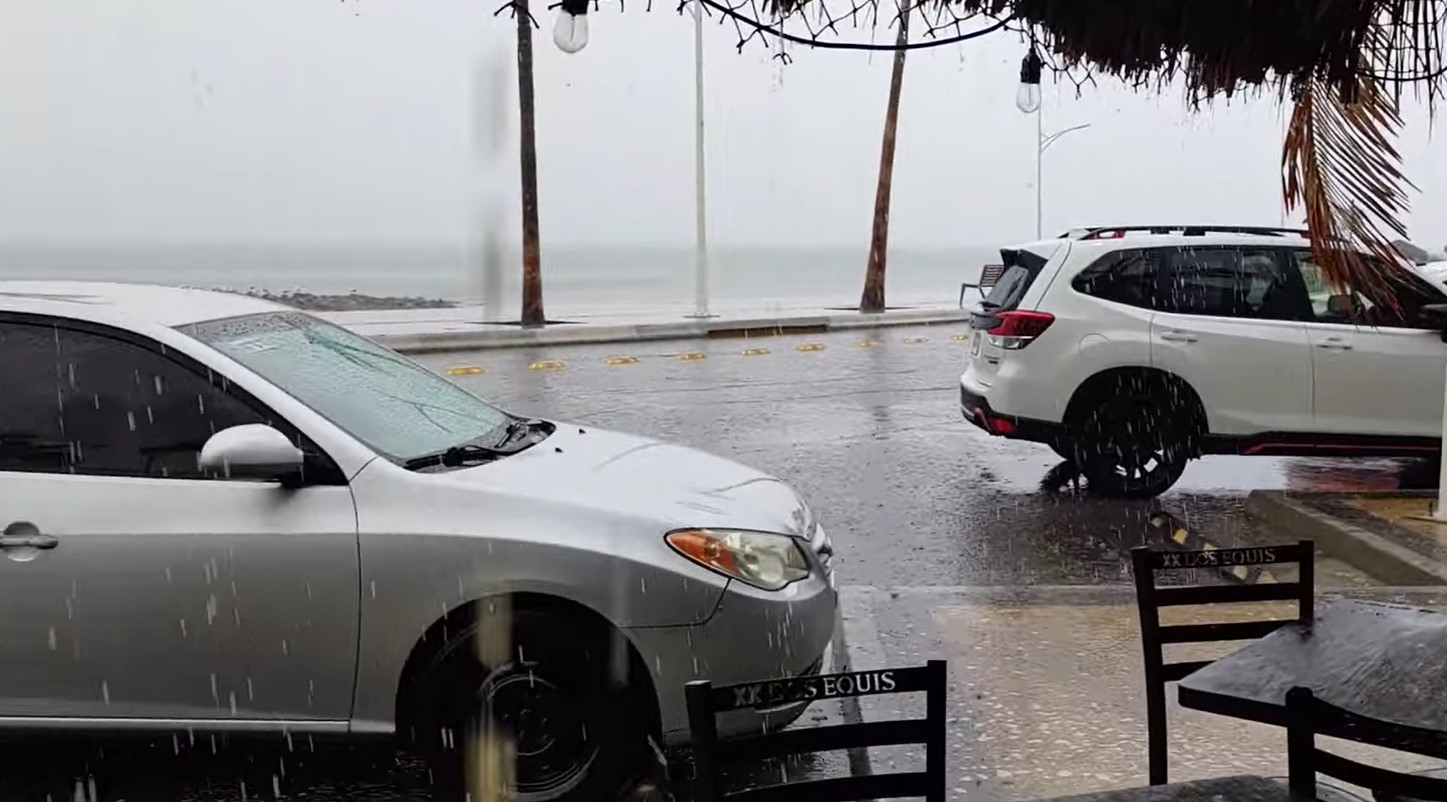Category 4 Hurricane Hilary is already drenching the Baja Peninsula as it makes it way north to SoCal. Warm ocean teams thanks to El Nino are powering the hurricane, but as it moves north into cooler waters, the hurricane is expected to become a tropical storm, but still bring upwards of 5+ inches of rain to areas like San Diego and Los Angeles.

A storm headed towards Southern California grew into a hurricane on Thursday and later strengthened to a major Category 4 storm, the National Hurricane Center said. It is expected to bring heavy rainfall to parts of the state — as a tropical storm — after hitting the Baja Peninsula. Currently the center of the hurricane is flirting with the idea of skirting the Baja Coast, but is still bringing local flooding to the communities of Cabo and the East Cape.
"Hilary just slammed into us," said Jonathan Roldan at Tailhunter Sportfishing International in La Paz, Baja California. "The restaurant is already flooded. So, is the Malecon. I think they will cancel fishing tomorrow as well."

The storm "is not expected to be a hurricane on final approach," said Greg Postel, a hurricane and storm specialist at the Weather Channel who has a doctorate in atmospheric sciences.
The storm's remnants are likely to bring dangerous flooding as well as strong winds to parts of California, including the Los Angeles Basin, the Weather Channel reports. "Significant flooding impacts" are expected in the southwestern U.S., according to the hurricane center.
Postel said the storm will likely cause large swells along the coast in the next several days.
"It is rare — indeed nearly unprecedented in the modern record — to have a tropical system like this move through Southern California," Postel said.
Let's see how rare they are! For the actual history of these types of storms in the region, in the limited weather data available, Hurricane Norman hit SoCal in 1978. In 1939 a tropical storm caused flooding in Long Beach. Also, in 1858 a hurricane hit San Diego. So it's rare, but has happened multiple times in modern history.
At the time of this writing, Hurricane Hilary was located southwest off Cabo San Lucas, with maximum sustained winds of 145 mph, according to the National Hurricane Center. It was moving west-northwest (away from the peninsula and working northwest up the coast) at 13 mph. The storm is expected to continue moving in a west-northwest direction, the center said. It looks to basically trace the outline of Baja and work northwest to SoCal so that is a good thing-- vs. moving east, making landfall and barreling though as a CAT 4 Hurricane!
Forecasters said the storm is expected to produce 3 to 6 inches of rainfall, with maximum amounts of 10 inches, across portions of Mexico's Baja California Peninsula through Sunday night, with the possibility of flash flooding. Postel said there will likely be "damaging wind gusts," especially at higher elevations, in the area, and swells along the coast.
Tropical storm watches and warnings are in effect for parts of western Mexico.
On the forecast track, the center of Hilary will move close to the west coast of the Baja California peninsula over the weekend and reach Southern California by Sunday night," the hurricane center said.
"Hilary is expected to weaken to a tropical storm by Sunday afternoon before it reaches southern California," it also added.
Power outages in Baja and Southern California could also be a result of Hilary. Here at Generator Mart, we also hope for the safety and well being of everybody that might be affected by a hurricane or fire etc. We are big believers in preparing for the worse case scenario and never want to be left without power! Stay safe in Baja and SoCal.
RELATED POSTS
Proin auctor nibh vitae urna lobortis, in vulputate erat facilisis. Sed lacinia lorem eget orci finibus, et maximus nisi sagittis.

'Bomb' Storm, Outages Hit Pacific Northwest
A strong, low-pressure system helped usher in early season rainfall to much of the Pacific Northwest and Northern California, according to the...
Read more ».jpg?width=352&name=dave-llEjCH71E9o-unsplash%20(Custom).jpg)
Thunderstorms Cause Deaths, Power Outages for 600K In South, East Coast
Two people have died, and hundreds of thousands of customers were without power across several states as severe storms hammered the East Coast and...
Read more »
MX Storms Norma & Otis Hit Baja, Acapulco
Last week Hurricane Norma blew across the Baja Peninsula creating havoc in Cabo San Lucas and areas like the East Cape and La Paz on the typically...
Read more »
